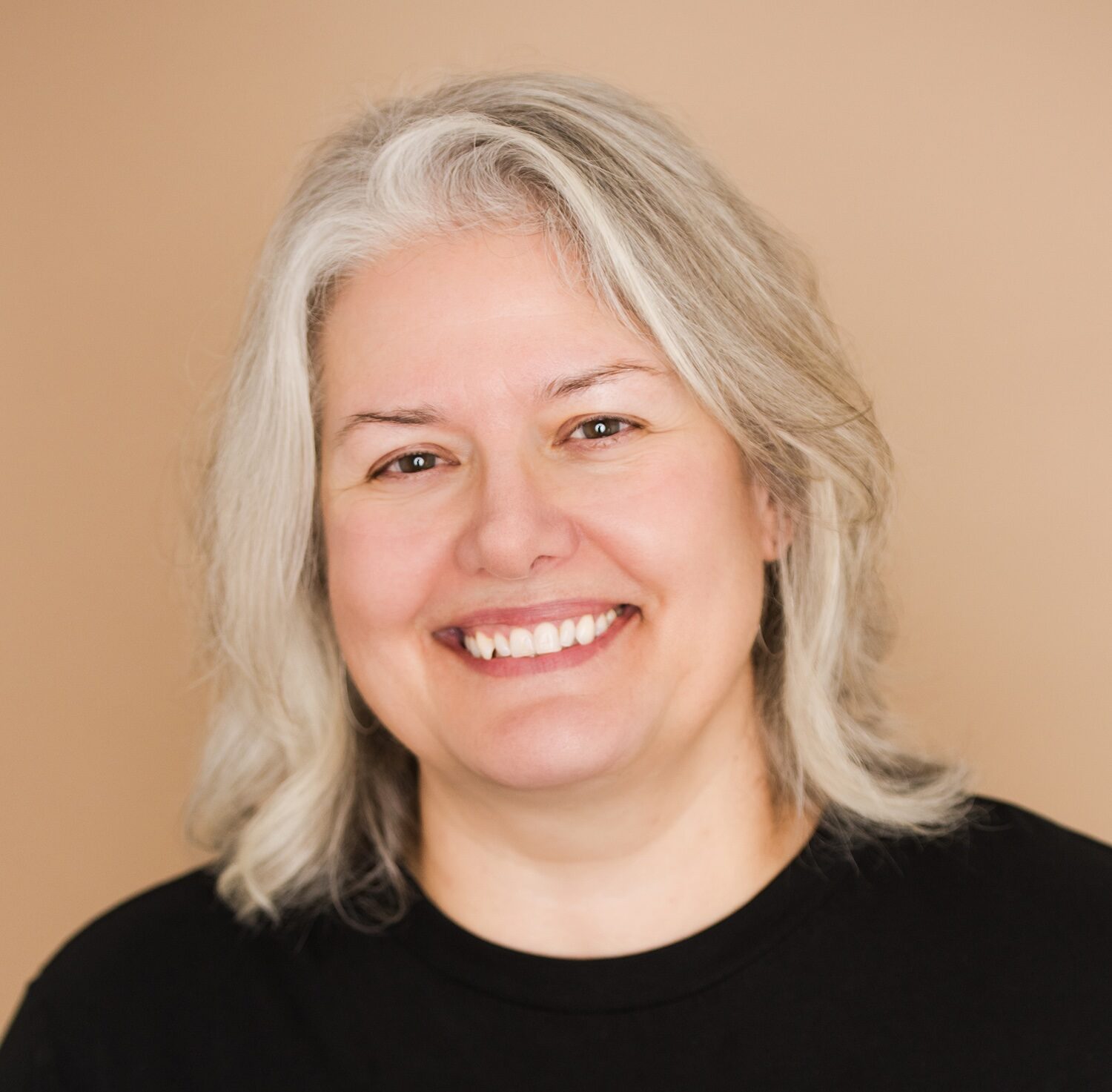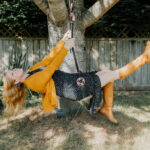At Engage + Empower, collaboration isn’t just part of our process; it’s the whole foundation. Every project gets stronger when we bring in people who know their craft and care about how their work connects to the bigger picture.
That’s why I’m so excited to share a conversation with our longtime collaborator and now official team member, Barb Murphy. Barb has been a creative partner and friend for years, bringing more than two decades of design experience to the table. She’s seen the industry evolve from hand-sketched layouts to lightning-fast digital workflows, and she still somehow keeps her sense of humour (and her font library) fully intact.
We sat down to talk about how design has changed, what today’s tools can’t replace, and what experience still teaches us about creative work.
Erin: You’ve been designing for more than twenty years, which is basically several design lifetimes at this point. What first drew you to design, and what’s kept you inspired all this time?
Barb: I was always creative as a kid, always building or making something. Seeing something that doesn’t exist yet, or figuring out how to make something that already exists in a new way, has always been fun. It’s just problem-solving. Creative brains work differently. I think we’re hardwired to be creating or thinking about creating something all the time. We can take breaks, but we always end up wanting to go back to it. I stopped doing graphic design for about five years, and when I started dabbling in it again, I realized how much I’d missed it and how much I enjoyed it, and I came back pretty much full-time.
Erin: You’ve talked about how a lot of practical knowledge doesn’t always get passed down anymore. What are some of the skills or tools that newer designers might not get exposed to today?
Barb: I’m not really sure how much print production or pre-press training is part of design programs today. When I was in school, it was pretty hands-on because so much of it was still done manually, and desktop publishing was just becoming a thing. We learned how to develop and strip film, burn plates, and even print our projects on a printing press. The Mac was just starting to appear in studios then, and our class had only two desktop computers to share. People didn’t have computers at home.
It’s nice to see there’s a bit of a print revival happening now. Print Design Academy, for example, teaches graphic design specifically for print. I’m planning a few personal print projects in the new year just to play around and experiment again.
Erin: One of the things I love about working with you is how you balance creativity with structure. You have a great eye, but you also think about how things actually work. How has that approach evolved for you over the years?
Barb: I’ve always been curious about how things work. If I’m introduced to something new, guaranteed I’m going to firehose you with about three million questions about it. I just like understanding how things function. Over my career, I’ve worked on so many different products and industries and picked up things I never would’ve been exposed to otherwise. I can tell you a lot about drum kit cymbals, even though I’ve never played drums in my life, all from working on the SABIAN cymbal account for a lot of years. I think as a designer, you have to be curious. It’s what makes you a better problem solver. It also requires staying current with rapidly shifting trends and industry standards.
Erin: Collaboration is such a huge part of design. What do you think makes for a great working relationship between a designer and their client or team?
Barb: Good collaboration really comes down to process. When everyone understands how the work moves from idea to delivery, it takes a lot of pressure off and keeps things running smoothly. Clear timelines, defined roles, and a shared understanding of what’s needed at each stage make all the difference.
I like when there’s a rhythm where feedback happens at the right time, files are shared in a way that makes sense, and everyone knows what the next step is. It doesn’t mean everything has to be rigid, but having structure gives you space to actually be creative instead of scrambling to figure things out as you go.
Erin: If you could give one piece of advice to new designers or even to clients learning how to work better with designers, what would it be?
Barb: I think it’s really worth thinking about what kind of designer you want to be and what kind of work you actually want to be doing. It’s easy to just follow whatever comes your way, but being intentional about the kind of projects or clients you want makes a big difference over time.
And if you decide to go the freelance route, learn how to run it like a business. Figure out how to price your work properly, manage your time, and keep things organized so you’re not just chasing projects, but actually building something sustainable. It’s not the fun or creative part, but it’s what lets you keep doing the creative part for the long haul.
Working with seasoned designers like Barb always reminds me that good design isn’t just about what looks great on screen. It’s about problem-solving, storytelling, and translating ideas into something people actually connect with. It’s a craft built on experience, curiosity, and care, and that’s something no shortcut or template can replace.
If you’d like to collaborate with Barb and the Engage + Empower team on a design or communications project, we’d love to hear from you. From brand visuals to campaign materials, we help organizations bring their stories to life through clear, accessible, and strategic design. Reach out anytime through our contact page.





